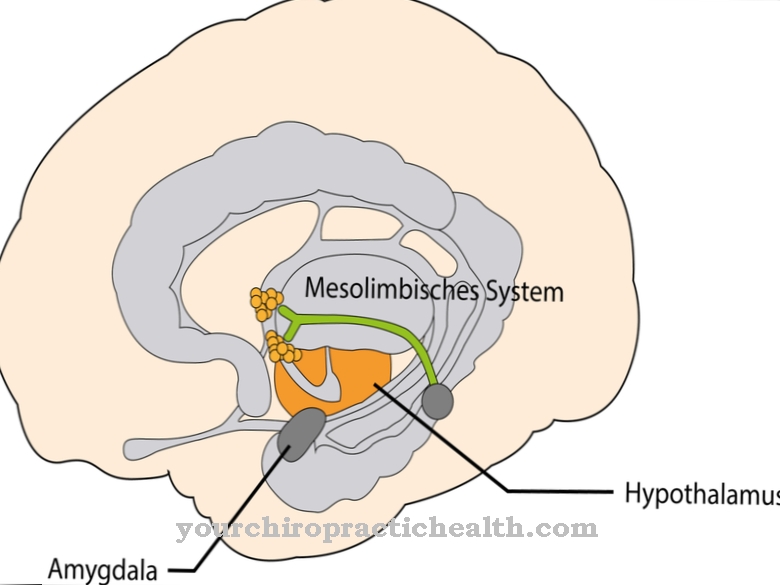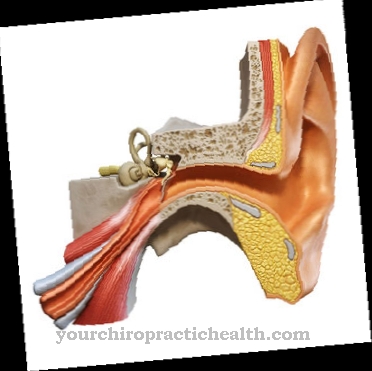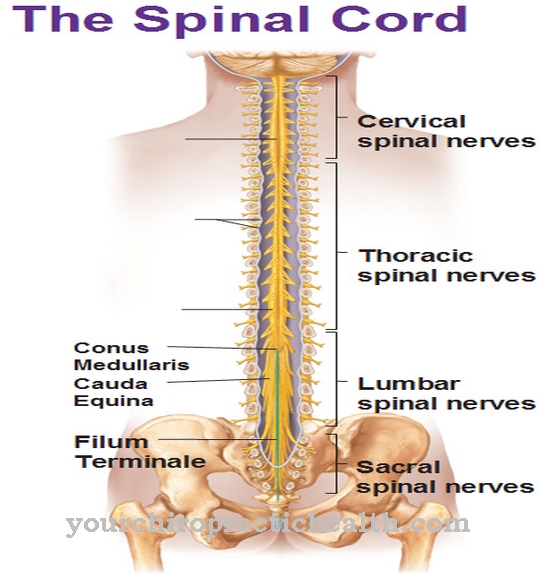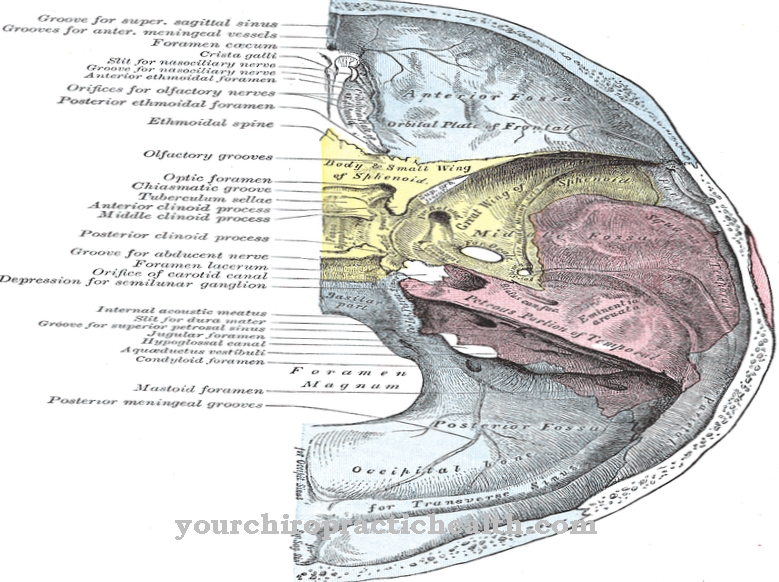The adrenal gland is functionally and topographically divided into the adrenal cortex (cortex glandulae suprarenalis) and the Adrenal medulla (Medulla glandulae suprarenalis). The adrenal medulla forms the smaller part of the adrenal gland. Adrenaline and noradrenaline are produced in the marrow of the adrenal gland.
What is the adrenal medulla?
The adrenal gland is a hormonal gland that sits on top of the kidney poles. Two organs are united in the adrenal gland, which weighs around five grams. On the one hand the adrenal cortex, in which hormones are formed, and on the other hand the adrenal medulla, which is part of the sympathetic nervous system. The adrenal medulla is not a hormonal gland in the strict sense, but an extension of the autonomic nervous system.
From a developmental point of view, the adrenal medulla is a sympathetic ganglion, that is, an accumulation of nerve cells that belong to the sphere of activity of the sympathetic nerve. The sympathetic nerve is also known as the fight and flight nerve. It puts the body on alert and ready to perform. With increased sympathetic activity, for example, the heart beats faster and the bronchi expand.
Anatomy & structure
The adrenal medulla is located inside the adrenal gland, surrounded by the adrenal cortex. Embryologically, the adrenal medulla comes from the so-called neural crest. In embryonic development, this structure primarily gives rise to structures of the peripheral nervous system. So the adrenal medulla arises from part of the nervous system.
Therefore, highly specialized nerve cells, the chromaffin cells of the sympathetic nervous system, are found in the adrenal medulla. A distinction is made between the chromaffin A cells (type I) and the chromaffin N cells (type II). The cells are called chromaffin because they can be easily stained with chromium salts. 80% of the cells of the adrenal medulla are A cells, 20% are N cells. The cells are arranged in groups or strands around the finest blood vessels (capillaries and venules).
Function & tasks
If one considers the function of the adrenal medulla and especially the chromaffin cells, it quickly becomes clear why the cells are called A cells and N cells. The catecholamine adrenaline is produced in the A cells of the adrenal medulla and the hormone or neurotransmitter noradrenaline is produced in the N cells. Adrenaline, also known as epinephrine, is known as the stress hormone and is synthesized from the amino acids L-phenylalanine and L-tyrosine.
The heart rate is increased by adrenaline, the blood pressure rises, the bronchi are dilated and thus deep breathing is possible. In addition, energy is provided by breaking down fat (lipolysis) and releasing and producing glucose. The blood circulation is centralized, so that the vital organs and the muscles of the legs and arms are supplied with blood. The gastrointestinal activity, however, is inhibited.
The release of adrenaline occurs through nerve stimuli or other hormones, for example through an increased cortisol level. Triggers can be stress, injuries, inflammation or low blood sugar levels. If the adrenaline concentration in the blood is too high, production is physiologically inhibited again by a negative feedback mechanism. Norepinephrine, also known as norepinephrine, is produced from dopamine using the enzyme dopamine hydroxylase. Vitamin C plays an important role here as a cofactor. Noradrenaline is related to adrenaline, but due to the lack of a methyl group in its chemical structure, it sometimes has different effects than adrenaline.
The main place of action of noradrenaline are the arterioles, i.e. the small arteries in the bloodstream. The noradrenaline leads to a constriction (vasoconstriction) of these vessels. This leads to an increase in blood pressure. More important than this hormonal effect is the function of noradrenaline as a neurotransmitter. In the sympathetic nervous system, norepinephrine acts as a transmitter substance at the synapses. With the help of a neurotransmitter, excitations can be transmitted from one nerve cell to other (nerve) cells. Besides acetylcholine, noradrenaline is the most important neurotransmitter in the autonomic nervous system. Norepinephrine is released from the adrenal medulla, especially during stress.
Diseases
Pheochromocytoma is a tumor that is predominantly found in the adrenal medulla and is also the most common disease of the adrenal medulla. Most of the time, the pheochromocytoma is hormonally active, i.e. it produces adrenaline, noradrenaline and, in rare cases, dopamine. The main symptom of pheochromocytoma is high blood pressure, as both adrenaline and noradrenaline cause blood pressure to rise by narrowing the blood vessels.
The tumor does not always produce hormones evenly. If the adrenaline or noradrenaline repeatedly enters the blood in large amounts in spurts, it can lead to seizure-like blood pressure crises. These are accompanied by feelings of fear, sweating and racing heart. The seizures can be triggered, for example, by activating the abdominal press when defecating or by consuming nicotine.
In both forms of pheochromocytoma, headaches, nausea, vomiting and an accelerated pulse (tachycardia) also occur. The diagnosis of pheochromocytoma is made by determining the breakdown products of the hormones in the urine. The therapy consists of surgical removal of the tumor tissue. Various diseases such as diabetes mellitus, amyloidosis, porphyria or long-term alcohol abuse can result in an underactive adrenal medulla. Constant stress over a long period of time is also discussed as a triggering factor for adrenal fatigue.
Underactive adrenal medulla manifests itself in symptoms such as chronic fatigue, lack of energy and depression. Those affected suffer from recurring infections, allergies and disorders of the immune system. They have very poor concentration and a rather short attention span. Digestion is irregular and dizziness occurs, especially when standing up quickly. A characteristic of adrenal fatigue is that symptoms improve when the stress subsides. For example, the symptoms are much milder on vacation.
Typical & common kidney diseases
- Kidney failure (renal failure)
- Acute kidney failure
- Chronic renal failure (chronic kidney failure)
- Pelvic inflammation
- Inflammation of the kidneys












.jpg)



.jpg)










.jpg)
